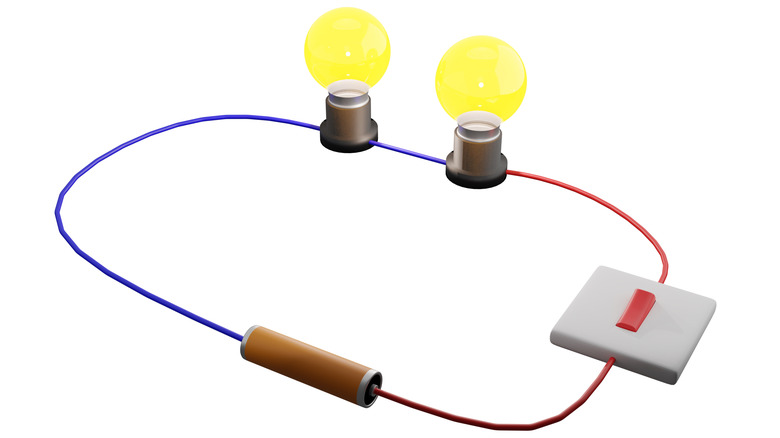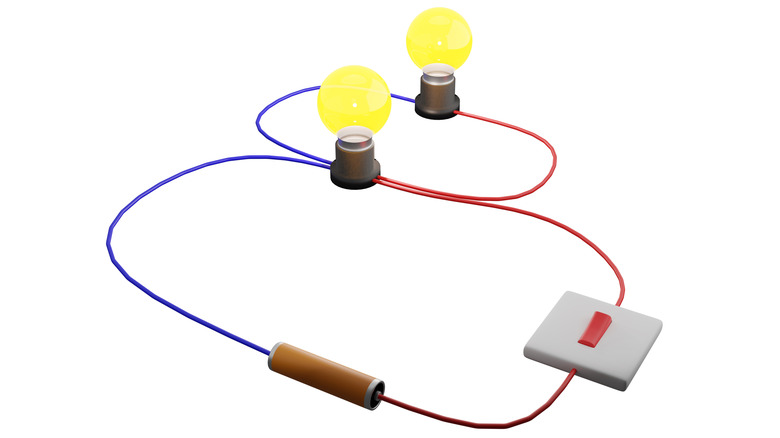How To Calculate A Voltage Drop Across Resistors
Electrical circuits are paths that transmit electric current, and they generally consist of a power source (providing voltage to the system, fittingly measured in volts), wires that allow the current to flow, resistors that resist the current and expend voltage, and a switch to open and close the current flow. Sometimes, however, a drop in voltage can occur when there's not enough energy flowing through the circuit. In such cases, knowing how to calculate a voltage drop (loss of energy) across resistors can help you determine if a device isn't getting enough power to work properly.
First, it's important to understand what Ohm's law is because it distinguishes the relationship between the current, resistance, and voltage of a circuit. This law is often represented by the equation "V = IR," where V stands for the voltage, I stands for the current measured in amperes (A), and R stands for the resistance measured in ohms (Ω). Now, you can start calculating voltage drop across resistors in a simple electrical series circuit.
Let's say that you have a series circuit with a 30-volt battery and two resistors — the first at 4 ohms and the second at 6 ohms. You need to determine the total resistance first, which just involves adding the two resistances to get 10 ohms. Next, you need to find the current with the Ohm's law equation. So, you'll need to divide the voltage (30 volts) by the total resistance (10 ohms), which gives you 3 amps. Finally, you can find the voltage drop by plugging in the current and resistance of each resistor into the Ohm's law equation, which gives you 12 volts for resistor one and 18 volts for resistor two. If you do the math correctly, the sum of the voltage drops will equal the total voltage.
Additional voltage drop calculations in series circuits and parallel circuits
Still using Ohm's law, it's possible to calculate voltage drop and the potential voltage at points before, between, and after each resistor in a series circuit; it just requires a slightly different approach. Let's say that resistor one is 4 ohms and resistor two is 6 ohms. The first point of interest (A) before resistor one is 60 volts, the second point (B) between resistors one and two is 40 volts, and the potential at a third point (C) after resistor two is unknown.
The voltage drop across resistor one is the difference between the potential of the surrounding points of interest. So, you would subtract point B from point A to get a voltage drop of 20 volts across resistor one. Now, you need to find the current flowing through resistor one by dividing the first voltage drop (20 volts) by the resistor's value (4 ohms), which is 5 amps. Since the same current flows through resistor two, you can determine the voltage drop across the second resistor by multiplying its value (6 ohms) to the current (5 amps), which comes to 30 volts.
On the other hand, the characteristics of a parallel circuit are different from a series circuit. The primary difference is that current flows through multiple paths and can vary while the voltage is the same for each path. Another difference, though, is that the voltage is applied equally across the multiple paths. Since each component receives the same voltage, it's much simpler to calculate the voltage drop across a resistor in a parallel circuit. Let's say that you have a 30-volt battery with three resistors on a parallel circuit. The voltage drop across each resistor will be 30 volts.

